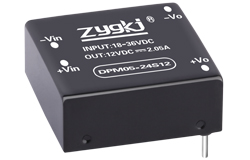albisteak
Nola eraiki 120 Volt AC hornidura 3 Volt DC irteerarako
Egilea: ZYG Power Module Time: 2023-4-20
If you looking to power a small device that requires 3 volts of DC power, you may be wondering how to build a suitable power supply. One option is to build your own 120 volt AC power supply and use a voltage regulator to step down the voltage to 3 volts. Here how to do it:
Materials:
– Step-down transformer (120V AC to 12V AC)
– Bridge rectifier
– Capacitor
– Voltage regulator (LM317)
– Heat sink
– Resistors
– Potentiometer
– LED
– 3 volt DC load
– Soldering iron and solder
– Multimeter
Step 1: Choose a transformer
The first step is to choose a step-down transformer that converts the 120V AC input to 12V AC output. Make sure the transformer is rated for the amount of power you need (in watts) and that it has the correct output voltage.
Step 2: Rectify the AC voltage
Next, you need to rectify the AC voltage using a bridge rectifier. This will convert the AC voltage to a pulsating DC voltage.
Step 3: Smooth out the DC voltage
To smooth out the pulsating DC voltage, you need to connect a capacitor across the rectified output. This will help to stabilize the voltage and reduce ripple.
Step 4: Regulate the voltage
Now it time to regulate the voltage to a steady 3 volts using an LM317 voltage regulator. This can be achieved by connecting a resistor and a potentiometer to the voltage regulator, which will allow you to adjust the output voltage to 3 volts.

Step 5: Add a heat sink
The LM317 voltage regulator can get quite hot, so it important to add a heat sink to dissipate the heat. You can attach the heat sink to the voltage regulator using thermal paste or adhesive.
Step 6: Test the circuit
Before connecting your load, it important to test the circuit using a multimeter to ensure that the output voltage is stable and accurate. Adjust the potentiometer until the output voltage is exactly 3 volts.
Step 7: Connect the load
Finally, you can connect your 3 volt DC load to the output of the voltage regulator. You may also want to add an LED to indicate when the circuit is powered on.
By following these steps, you can build a 120 volt AC power supply that provides a stable 3 volt DC output for your small devices. Make sure to follow safety guidelines when working with high voltage circuits, and always test your circuit before connecting your load.
Aurrekoa: how to wire ac to dc power supply
Hurrengoa: How to Differentiate Between AC and DC Power Supply
informazio garrantzitsua
-
2023-5-4
AC-DC Power Supply: Efficient and Reliable Energy Conversion
AC-DC power supply is a device that is used to convert alternating current (AC) to direct current (DC) so that electronic devices can operate efficiently. The conversion of power from AC to DC is necessary because most electronic devices require a DC power source to operate. The AC-DC power supply is an essential component in many electronic devices such as computers, televisions, and audio equipment. It is designed to provide a stable and reliable source of power to ensure that the electronic device operates efficiently. The efficiency of the AC-DC power supply is critical to the overall performance of the device. One of the advantages of AC-DC power supply is its efficiency. The conversion process is designed to minimize the...
Ikusi xehetasunak -
2023-9-1
Electric Power Series: Harnessing the Energy of Electricity
Electricity is an essential part of our everyday lives. From powering our homes to fueling our industries, electricity has become a fundamental resource. The ability to harness and utilize electrical energy has revolutionized the way we live and work. The concept of harnessing electricity dates back to ancient times, with the discovery of static electricity by the Greeks. However, it was not until the late 19th century that electricity began to be generated and distributed on a large scale. The first step in harnessing electrical energy is the generation of electricity. This is typically done through power plants, which convert various forms of energy, such as fossil fuels, nuclear energy, and renewable sources like solar and wind, into electrical energy....
Ikusi xehetasunak -
2023-10-27
Is a Modular Power Supply the Right Choice for Your PC?
Introduction The heart of any computer is its power supply unit (PSU). It's the unsung hero that delivers the energy needed for all the components to work harmoniously. When building or upgrading a PC, one critical decision you'll face is selecting the right PSU. Among the choices available, modular power supplies have gained popularity. But is a modular PSU the right fit for your needs? The Basics of Modular Power Supplies Before diving into the pros and cons of modular power supplies, let's understand what makes them unique. A modular PSU is designed with detachable cables, allowing users to connect only the cables needed for their setup. This is in contrast to non-modular or semi-modular PSUs, where the cables...
Ikusi xehetasunak -
2023-5-4
AC-DC Power Supply: The Ultimate Solution for Reliable Energy Conversion
AC-DC power supply is a type of power supply that converts AC (alternating current) power from the mains into DC (direct current) power that can be used by electronic devices. It is an essential component in most electronic devices, ranging from household appliances to medical equipment. One of the main advantages of an AC-DC power supply is its reliability. It is designed to provide a stable and consistent output voltage, which is essential for the proper functioning of electronic devices. This makes it a popular choice for critical applications where power interruptions can result in significant consequences, such as in medical equipment or industrial control systems. Another advantage of an AC-DC power supply is its efficiency. It is designed to...
Ikusi xehetasunak -
2023-5-22
Powering Industrial Equipment with Efficient AC-DC Converters
The reliable and efficient operation of industrial equipment relies heavily on the quality of the power supply. To ensure optimal performance, industrial equipment often requires a stable and clean DC voltage that can be generated from the AC mains power supply using an AC-DC converter. Traditionally, industrial equipment has been powered by bulky and heavy linear power supplies that convert AC to DC using a transformer and rectifier circuit. However, advancements in semiconductor technology have led to the development of more efficient and compact AC-DC converters that utilize switch-mode power supply (SMPS) topologies. One of the most common SMPS topologies used in industrial equipment is the flyback converter. This topology is simple, cost-effective, and can provide high power density. It...
Ikusi xehetasunak -
2023-6-13
Revolutionizing Energy Storage: The Bidirectional Converter Technology Explained
The world today is facing an energy crisis like never before. With the growing demand for electricity, coupled with the rising costs of energy, it has become necessary to explore new ways of storing and utilizing energy. One technology that has emerged as a game-changer in this field is the bidirectional converter. The bidirectional converter is an electronic device that is capable of converting direct current (DC) to alternating current (AC) and vice versa. This technology has been used in various applications such as electric vehicles, renewable energy systems, and energy storage systems. The primary benefit of bidirectional converters is their ability to transfer energy between two sources. This means that the converter can take power from a battery or...
Ikusi xehetasunak


















